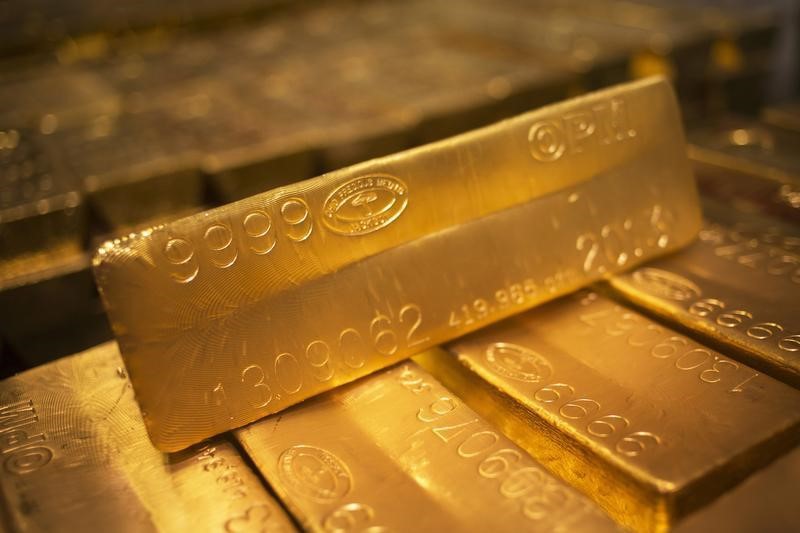Investing.com - Gold futures rose on Tuesday, after data showed that manufacturing activity in the U.S. expanded at the slowest rate in more than two years in August, dampening optimism over the strength of the economy.
Gold for December delivery on the Comex division of the New York Mercantile Exchange tacked on $6.60, or 0.58%, to trade at $1,139.10 a troy ounce during U.S. morning hours. A day earlier, gold dipped $1.50, or 0.13%.
The Institute for Supply Management said its index of purchasing managers fell to 51.1 last month from a reading of 52.7 in July. Analysts had expected the manufacturing PMI to dip to 52.6 in August.
The downbeat data fanned hopes that the Federal Reserve could delay raising interest rates until the very end of 2015, instead of at its next policy meeting in two weeks.
The timing of a Fed rate hike has been a constant source of debate in the markets in recent months.
Meanwhile, steep losses in global equity markets supported demand for the yellow metal.
Wall Street tumbled after the open on Tuesday, as fears of a China-led global economic slowdown spooked traders and rattled sentiment.
European and Asian equity markets also came under heavy selling pressure after a pair of reports on China's manufacturing sector added to indications that the world's second largest economy is losing momentum.
Financial markets have been roiled since China devalued the yuan on August 11, sparking a selloff in equities, commodities and emerging-market assets.
Elsewhere in metals trading, copper for December delivery on the Comex division of the New York Mercantile Exchange slumped 2.7 cents, or 1.17%, to trade at $2.310 a pound as worries over China's slowing economy dampened demand for the red metal.
The final Caixin/Markit manufacturing purchasing managers’ index for August came in at 47.3, the lowest reading since March 2009.
Meanwhile, the official China's manufacturing purchasing managers' index inched down to 49.7 last month from 50.0 in July, the weakest level since August 2012.
A reading below 50.0 indicates industry contraction. Copper traders view Chinese factory activity as an indicator of the nation's copper demand, as the red metal is widely used by the sector.
Copper prices sank to a six-year low of $2.202 on August 24 as concerns over the health of China's economy and steep declines on Chinese stock markets dampened appetite for the red metal.
The Asian nation is the world’s largest copper consumer, accounting for almost 40% of world consumption last year.
